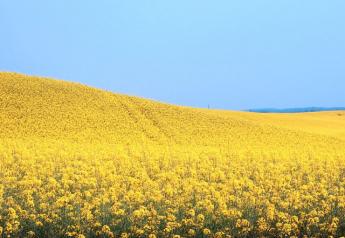5 Lessons from 5 Decades of Farming

In the last five years, Steve Pitstick has witnessed more turmoil and change in farming than he did in the first 40 years of his career.
“I’ve been farming my whole life,” he says. “My dad was a farmer, as was my grandfather and my great grandfather, so we've been doing this for a while trying. We’re still trying to figure it out.”
Pitstick and his son farm in northeast Illinois, about an hour west of Chicago. Their operation includes corn and soybean production on about 5,000 acres.
“The situation we're in now seems to be eerily similar to what I started with when I started farming in the mid-1970s,” Pitstick says.
Listen to Pitstick on the Farming the Countryside podcast with Andrew McCrea:
How do farmers survive and thrive in farming today? Pitstick shares some strategies he’s employed over the decades.
Prioritize your time on what matters most.
“I spend a lot of time on production,” Pitstick says. “That's something I can actually do something about most of the time. You've only got so many hours in a day, so I'm going to spend them on production.”
Each year Pitstick tries at least one new production method or technology to make sure he’s using the best tools at his disposal.
Remove price risk when you can.
While Pitstick is focused on production, grain marketing is a close second. Early in his career, he studied marketing theories such as Fibonacci retracement and Elliot wave theory.
“I thought I had everything figured out with seasonal patterns, basis, etc.,” he says. “I did for a while and then the game changed.”
Now Pitstick is focused on a simpler approach.
“Look at those charts, and when you're in extreme highs, you have to be taking some of the cookies off the table,” he says. “You just have to be selling when prices are high. Then when they shift lower, just kind of sit around and wait. Go do something else and let the market change. Then I think over years of time, if you play this game long enough, marketing will average out.”
Sell and buy simultaneously.
For most of his career, Pitstick bought farm inputs in a one-shot deal. Now he’s shifted to matching up his input purchases with grain sales.
“There's a lot more risk out there now with these higher prices,” he says. “So, I need to be selling some of that high-priced corn along when I buy the high-priced nitrogen.”
While he doesn’t think its necessarily a $1 for $1 because you could get too many bushels locked away and miss the opportunities on an even higher price, but they need to be correlated.
For this year, Pitstick is hoping for a good average for input prices. So, he’s buying some now and will buy more later.
“I probably want to have it all priced by the first of the year,” he says. “It is sort of an audible to space out those purchases because I don't know what the market is going to do. I think a lot of what we do is just an audible. Look at what the best intelligence that day is, make a decision and live with it. Then move on.”
Be cautious with long-term debt.
Pitstick follows the common saying: The seeds of despair are sown in the best of times.
“My grandpa went through the Depression, and they were cautious of debt,” he says. “I saw my dad laugh that off. He wanted to buy stuff because prices were going up. He got caught and paid the price.”
Pitstick says the landscape today is similar to when his dad was farming.
“I remember my dad just buying things because tomorrow prices would be higher,” he says. “But that does change at some point down the road, and we have to pay for those good times. Is that three years away, five or seven? I don't know but there will be a day of reckoning for this good time.”
As a result, Pitstick is conservative with his budgets for next year. He wants investments to pencil now and at lower prices.
“Looking at those lessons, I'm just a little bit cautious on these long-term deals,” he says. “You may miss out in the short term, but I think the long-term history might suggest it's the thing to do.”
Young farmers have big opportunities ahead.
The economics of farming since the 1980s have greatly impacted the number of farmers and size of farms, Pitstick says. That trend is continuing as Pitstick’s generation, the last large generation of farmers, shift into retirement.
“As I look around on my peers, there's a whole bunch of us that started farming from 1970 to 1982, and we’re still farming,” he says. “But there wasn't a whole lot of people who started farming from 1985 until the early 2000s.”
In the next 10 to 15 years, he says, today’s young farmers have a big opportunity.
“Farmers in their 30s and 40s have a huge potential to run some giant operations,” he says. “The hard part will be financing, as it will take a huge amount of money to run a 20,000-acre operation. I don't know how that's all going to play out.”







